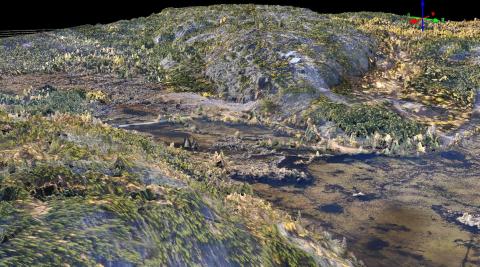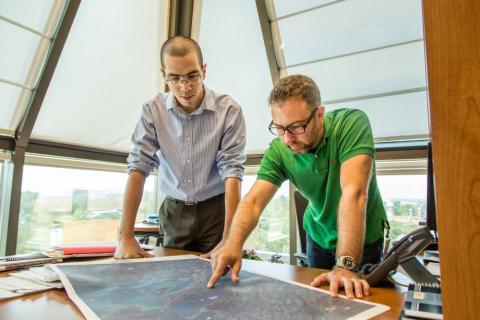Inside SRC
We know that wetlands, both in Canada and globally, store huge amounts of carbon. While we understand it’s important to store carbon, reduce CO2 emissions and mitigate climate change, we’re also aware that we need a greater understanding of how best to measure the carbon stored in wetlands.
Did you know that Saskatchewan has some of the highest rates of elevated radon in homes and buildings in Canada? Sandy Hutchison from Health Canada guest blogs about how people can protect themselves and their families from radon.
Energy is an intrinsic part of our daily lives, and it has become so common to simply make toast or coffee in the morning that we often forget how valuable energy is. For National Cut your Energy Costs Day on January 10, 2017, we are sharing seven ways to reduce your energy costs.
In 1960, the Lorado Mill was abandoned in northern Saskatchewan, leaving an estimated 227,000 cubic meters of radioactive uranium tailings that covered the mill site and flowed into nearby Nero Lake. In 2008, SRC was contracted to clean up the site, which began a multi-year journey to reduce the risk to human health, wildlife, and aquatic life.
Laboratory test results impact many areas of our daily lives. Accreditation enhances the public confidence in those test results. Find out how lab gets accredited, who does the accrediting and what role quality personnel play in maintaining standards.
In a recent case study, we examined historic and future climate extremes and variability in the Souris River Watershed that are impacting the energy sector. Find out how the energy sector has responded to extreme climate events and what future adaptation actions the they can implement to capitalize on potential opportunities and to reduce risks in a changing climate.
UAVs have the unique potential to transform emergency management as we know it. By leveraging UAVs alongside traditional manned relief efforts in an emergency, operations can be conducted faster, safer and more efficiently.
There are several off-grid communities and industrial sites in Saskatchewan that use diesel generators to meet their electrical power needs. But what if there was a more efficient way to generate power? SRC developed the Hybrid Energy Container (HERC) Power System in response to this challenge and put it to work at one of the mine sites they're remediating to demonstrate the technology.
Thomas Lavergne was an Environmental Engineering student at the University of Saskatchewan and a student in SRC’s Aboriginal Mentorship Program (AMP) at the time this post was written. We're happy to report he's now a full-time employee with our Environmental Remediation team!
SRC is home to one of five SLOWPOKE-2 low-power research reactors in the world. SLOWPOKE-2 is used primarily as an analytical tool for commercial analysis and research. Read on to find out what makes this reactor different than other power reactors.










